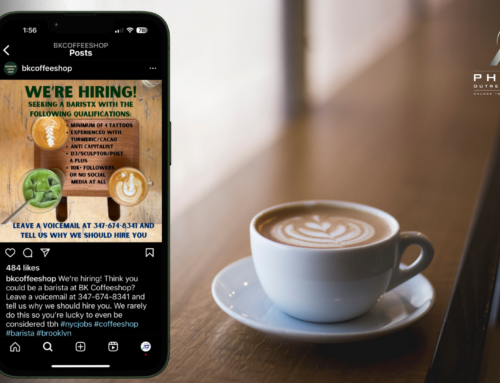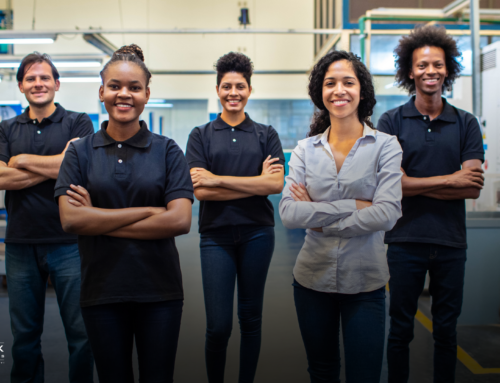The power of storytelling in workforce development cannot be overstated. Crafting a compelling narrative allows organizations to connect with their audience, inspire change, and shape the future of the public workforce system. One key avenue for amplifying your organization’s narrative is through building robust relationships with local media.
Let’s explore the pros and cons of fostering a two-way relationship with the media and discuss how it can significantly contribute to your outreach goals, tap into extensive audience networks, and enhance trust and credibility for your brand and services.
The Pros of Media Relationship Building:
- Expanding Network Reach:
- By cultivating a robust relationship with the media, your organization gains access to an extensive network that goes beyond your immediate reach. This allows you to connect with diverse audiences who may not be reached through traditional channels.
- Showcasing Organizational Identity:
- Media coverage serves as a powerful platform to spotlight your organization’s unique story, mission, and impact. This exposure goes beyond statistics and facts, creating an emotional connection with the community. This engagement is crucial for fostering a sense of belonging, involvement, and advocacy.
- Fostering Community Engagement:
-
- The media acts as a conduit for community awareness and involvement. Through strategic media partnerships, your organization can initiate and promote events, workshops, and initiatives, encouraging active participation from the community. This engagement not only enhances your visibility but also strengthens the impact of your workforce development initiatives.
Building Trust and Credibility:
- Establishing Authority:
- Collaboration with the media positions your organization as a reliable and trusted source of information in the field of workforce development. This helps build credibility among your target audience, stakeholders, and the wider community.
- Third-Party Validation:
- Media coverage serves as a third-party endorsement, validating the importance and effectiveness of your workforce development efforts. When the media acknowledges and highlights your initiatives, it adds a layer of authenticity and trust in the eyes of the community.
Narrative Control:
- Proactive Narrative Shaping:
- While there is an element of relinquishing control when engaging with the media, a proactive approach allows you to influence the narrative positively. Sharing success stories, innovations, and positive outcomes from your programs and the labor market helps the media tell a more comprehensive and optimistic story.
- Assisting Media in Positive Storytelling:
- Drawing on years of media experience, I understand that journalists often face time constraints and may default to highlighting challenges instead of solutions—frankly, it’s easier to just tell people that a problem exists! However, by providing the media with positive angles, innovations, and success stories, you help them present a more balanced and constructive narrative. This collaborative approach benefits the media’s coverage, their reputation, and your organization’s outreach goals.
- Positioning as Thought Leaders:
- Workforce development organizations can position themselves as thought leaders by offering valuable insights and context on national and local topics. This not only benefits the media in their quest for fresh expert perspectives but also elevates your organization’s standing as a knowledgeable and influential entity in the field.
In a rapidly changing world, the media relies on access to verified experts for concise and insightful commentary. By consistently providing expertise and positive narratives, workforce development organizations can play a pivotal role in shaping the media’s coverage, advancing their outreach goals, and contributing to the broader conversation on workforce development.
Tips for Effective Media Engagement:
- Personal Connections:
- Forge personal connections by introducing the media to individuals whose lives have been positively impacted by your workforce development initiatives. Share compelling stories of real people, their journeys, and the transformative effects of your programs. This human touch adds authenticity and relatability to your narrative.
- Testimonial Repository:
- Create and maintain a comprehensive repository of testimonials that cover diverse aspects of your services. These testimonials should encompass a range of experiences, from youth career exploration to successful upskilling stories. Having a catalog of authentic testimonials ensures that you are well-prepared to provide the media with impactful and varied narratives at a moment’s notice.
Be a Resource for Timely Topics:
- Crisis Response Team:
- Position your organization as a reliable resource for the media during local and national crises. Develop a crisis response team that can offer insights, solutions, and expert perspectives on workforce development issues arising during challenging times. This positions your organization as a valuable partner in addressing community concerns.
- Emphasize the Public Workforce System:
- Emphasize the critical role of the public workforce system in times of crisis. Showcase your organization’s commitment to supporting the community by actively participating in collaborative efforts with the public workforce system. This collaborative approach not only enhances your credibility but also reinforces the importance of unified action in addressing workforce challenges.
Offer Diverse Perspectives:
- Prepared Spokespersons:
- Anticipate the diverse needs of the media by having a roster of well-prepared spokespersons ready to address different topics. Identify experts within your organization who can provide insightful commentary on a range of subjects, from youth career exploration to labor market advancements in key sectors such as advanced manufacturing, healthcare, skilled trades, and technology.
- Youth Career Exploration:
- Designate spokespersons who can articulate the nuances of youth career exploration, including success stories, challenges, and the impact of your programs on the younger demographic. The media is struggling to find new stories and angles on how public education is adjusting to changes in the economy, and the demand to boost upskilling amid an aging workforce quickly approaching retirement.
- Upskilling Programs:
- Identify individuals within your organization who can speak authoritatively on upskilling programs. Highlight success stories, the relevance of upskilling in today’s job market, and the impact of your initiatives on the professional growth of individuals.
By humanizing your story, positioning your organization as a crisis resource, and offering diverse perspectives through well-prepared spokespeople, you not only capture the media’s attention but also contribute significantly to shaping the narrative around workforce development. This proactive approach ensures that your organization remains a valuable and sought-after voice in media coverage.
Building meaningful relationships with the media is a strategic imperative for workforce development organizations. While it involves relinquishing some control, the benefits in terms of outreach, credibility, and narrative shaping far outweigh the cons. By understanding the media’s needs and proactively engaging with them, you can position your organization as a thought leader, contributing to the larger narrative of the critical role workforce development plays in shaping individuals’ journeys and the community at large.
As you navigate media relationships, consider Phalanx Outreach Solutions as your strategic partner. With our expertise in communications consultancy, we can amplify your narrative, position you as a vital partner with media outlets, and ensure that your success stories are compellingly conveyed. Our collaborative approach to storytelling aligns seamlessly with your goals, making us an ideal ally in enhancing your media relationships, and helping you Unlock Your Story!






